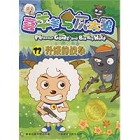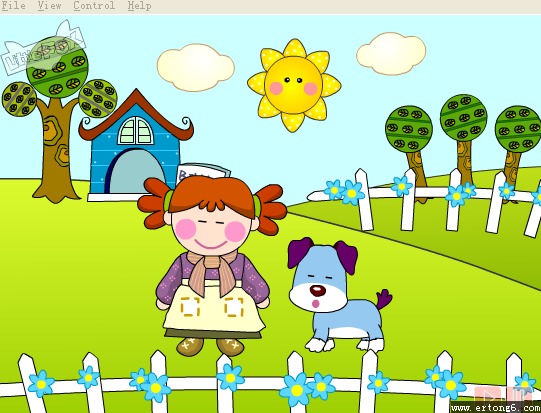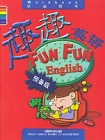三年级下册《Lesson 4 Vegetables and Fruit》教学设计
11-30 14:08:20| http://www.ertong6.com |小学英语教案|人气:683次
三年级下册《Lesson 4 Vegetables and Fruit》教学设计小学英语教案,教学目标
[智育目标]:Vocabulary
vegetables,fruit,morning, afternoon, evening
fish, chicken
Sentences:
I don’t like…
I like …
[素质发展目标]:(1)The students can freely use the words: vegetables, fruit,fish, chicken, morning, afternoon, evening.
(2)The students can use the sentence pattern: I don’t like…
教学重点难点
[教学重点]: (1) Vocabularies: vegetables,fruit,morning, afternoon, evening
(2) Sentences:
I don’t like…
I like …
[教学难点]:The teacher how to make the students master the key points in the text.
教学准备
radio and tape recorder, projector, pictures relating with the text, computer and disk
学生活动设计
Guess, what’s in my hand?
1.Lead in
Step one:
The teacher plays the song: We like fruit, and the students listen to the song.
Then the teacher set several questions:
(1)Can you tell me what fruit do you see?
(2)What fruit do you like?
The students answer the question.
The teacher plays the song again asking the students to sing with the music if they like.
Step two:
The teacher asks the students: What does Jenny like, can you tell me?
The students try to answer the question.
The teacher doesn’t give the answer.
2.Start new lesson
Step one:
The teacher plays the tape recorder, and the students listen to the tape carefully with the book closed.
Step two:
The teacher repeats the question: What does Jenny like, can you tell me?
The students give the answer.
Step three:
The teacher takes out the pictures: fish, chicken, vegetables and fruit.
The teacher asks the students: Do you know how to say these words in English?
Then the teacher plays the tape again. The teacher has pause at each of the following words: fish, chick www.ertong6.com en, vegetables and fruit.
The teacher asks the students try to tell the English names for the pictures.
Step four:
The teacher and the students have little games to practice the words.
The teacher asks the students: What fruit/vegetables do you like?
The students answer.
Step five:
The teacher asks the students: What fruit/vegetables do you know, can you tell me?
The students answer.
Step six:
The teacher gives the students a topic “Is fruit good for health?” asking them to discuss in groups.
Step seven:
The teacher tells the students they will learn part two.
First, the teacher plays the tape.
Then the teacher asks the students the following questions:
(1)When does Jenny get up?
(2)What does Jenny do in the afternoon?
(3)Does Jenny go to bed in the evening?
Step eight:
The teacher shows the students the pictures of “morning, afternoon and evening”.
The teacher sticks the pictures on the blackboard and write the corresponding words below the pictures.
The teacher reads the words and the students follow.
Step nine:
The teacher asks the students what do they do in the morning/afternoon/evening?
The students answer the questions.
Step ten:
The teacher and the students recall together what they have learned.
教后反思:
本课的内容是有关Jenny 饮食方的喜好和一天中的作息规律的。本课的重点是:vegetables,fruit,morning, afternoon, evening, I don’t like…, I like …由于本课的话题贴近学生们的生活,供学生们谈论的点比较多, 需要借助动画歌曲等教学媒体,使整堂课生动有趣,让学生们在快乐中学习。播放歌曲We like fruit,歌曲播完,教师向学生提问:What fruit do you like? 接着教师向学生提问:What fruit does Jenny like, can you tell me? 把学生自然引入课文学习中
[智育目标]:Vocabulary
vegetables,fruit,morning, afternoon, evening
fish, chicken
Sentences:
I don’t like…
I like …
[素质发展目标]:(1)The students can freely use the words: vegetables, fruit,fish, chicken, morning, afternoon, evening.
(2)The students can use the sentence pattern: I don’t like…
教学重点难点
[教学重点]: (1) Vocabularies: vegetables,fruit,morning, afternoon, evening
(2) Sentences:
I don’t like…
I like …
[教学难点]:The teacher how to make the students master the key points in the text.
教学准备
radio and tape recorder, projector, pictures relating with the text, computer and disk
学生活动设计
Guess, what’s in my hand?
1.Lead in
Step one:
The teacher plays the song: We like fruit, and the students listen to the song.
Then the teacher set several questions:
(1)Can you tell me what fruit do you see?
(2)What fruit do you like?
The students answer the question.
The teacher plays the song again asking the students to sing with the music if they like.
Step two:
The teacher asks the students: What does Jenny like, can you tell me?
The students try to answer the question.
The teacher doesn’t give the answer.
2.Start new lesson
Step one:
The teacher plays the tape recorder, and the students listen to the tape carefully with the book closed.
Step two:
The teacher repeats the question: What does Jenny like, can you tell me?
The students give the answer.
Step three:
The teacher takes out the pictures: fish, chicken, vegetables and fruit.
The teacher asks the students: Do you know how to say these words in English?
Then the teacher plays the tape again. The teacher has pause at each of the following words: fish, chick www.ertong6.com en, vegetables and fruit.
The teacher asks the students try to tell the English names for the pictures.
Step four:
The teacher and the students have little games to practice the words.
The teacher asks the students: What fruit/vegetables do you like?
The students answer.
Step five:
The teacher asks the students: What fruit/vegetables do you know, can you tell me?
The students answer.
Step six:
The teacher gives the students a topic “Is fruit good for health?” asking them to discuss in groups.
Step seven:
The teacher tells the students they will learn part two.
First, the teacher plays the tape.
Then the teacher asks the students the following questions:
(1)When does Jenny get up?
(2)What does Jenny do in the afternoon?
(3)Does Jenny go to bed in the evening?
Step eight:
The teacher shows the students the pictures of “morning, afternoon and evening”.
The teacher sticks the pictures on the blackboard and write the corresponding words below the pictures.
The teacher reads the words and the students follow.
Step nine:
The teacher asks the students what do they do in the morning/afternoon/evening?
The students answer the questions.
Step ten:
The teacher and the students recall together what they have learned.
教后反思:
本课的内容是有关Jenny 饮食方的喜好和一天中的作息规律的。本课的重点是:vegetables,fruit,morning, afternoon, evening, I don’t like…, I like …由于本课的话题贴近学生们的生活,供学生们谈论的点比较多, 需要借助动画歌曲等教学媒体,使整堂课生动有趣,让学生们在快乐中学习。播放歌曲We like fruit,歌曲播完,教师向学生提问:What fruit do you like? 接着教师向学生提问:What fruit does Jenny like, can you tell me? 把学生自然引入课文学习中
关键字: 小学英语教案,pep小学英语教案,人教版小学英语教案,闽教版小学英语教案
三年级下册《Lesson 4 Vegetables and Fruit》教学设计相关文章
- ·上一篇:三年级下册《Lesson5 Breakfast Lunch and Supper》教学设计
- ·下一篇:Module 4 Unit 1 What are you doing ?
- › 人教版三年级下册:12、想别人没想到的·教案
- › 人教版三年级下册:13、和时间赛跑·教案
- › 苏教版小学三年级下册:《练习4》教案
- › 人教版三年级下册:5、翠鸟·教案
- › 苏教版小学三年级下册:《放飞蜻蜓》教案
- › 苏教版小学三年级下册:《槐乡五月》教案
- › 苏教版小学三年级下册:《恐龙》教案
- › 人教版三年级下册:7、一个小村庄的故事·教案
- › 人教版三年级下册:8、路旁的橡树·教案
- › 苏教版小学三年级下册:《七颗钻石》教案
- › 人教版三年级下册:10、惊弓之鸟·教案
- › 苏教版小学三年级下册:《剪枝的学问》教案
- › 《Unit 6 At the zoo》教案
- › 《Unit 3 Let's paint Part A let's lea
- › PEP《Unit5 What would you like?》教案
- › 《unit 1 Hello Part A let's learn》教案
- › PEP英语三年级下册《Unit2 My family B Let’s t
- › 《It’s warm today.》教案
- › 六年级英语第四单元《Unit 4 My holiday》教学设
- › 三年级英语下册《Unit 3 How many?》教学设计
- › Unit4 Postman and policeman Let’s learn教学设
- › Unit3 Hobbies 第一课时 教学设计
- › Unit 3 Asking the way教学设计
- › 小学英语教学反思














